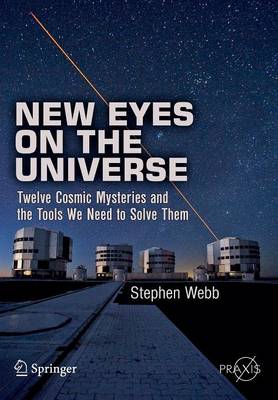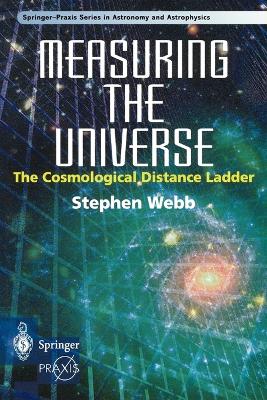Springer Praxis Books
2 total works
“New Eyes on the Universe – Twelve Cosmic Mysteries and the Tools We Need to Solve Them” gives an up-to-date broad overview of some of the key issues in modern astronomy and cosmology. It describes the vast amount of observational data that the new generation of observatories and telescopes are currently producing, and how that data might solve some of the outstanding puzzles inherent in our emerging world view. Included are questions such as: What is causing the Universe to blow itself apart? What could be powering the luminous gamma-ray bursters? Where is all the matter in the Universe? Do other Earths exist? Is there intelligent life out there? The renowned author explains clearly, without recourse to mathematics, why each question is puzzling and worthy of research. Included in the study of the wide range of sensitive and powerful instruments used by scientists to try and solve these problems are ones which capture electromagnetic radiation and ‘telescopes’ for cosmic rays, neutrinos, gravitational waves, and dark matter.
This book discusses twelve areas of active astronomical research, ranging from the nature of dark energy to the existence or otherwise of extraterrestrial civilizations, and devotes one chapter to each topic. Although astronomers tackle each of these questions using information gleaned from all possible wavelengths and sources (and this is emphasized throughout the book), in this work the author dedicates each chapter to a particular observational method. One chapter covers X-ray telescopes for investigating black holes, while another uses infrared telescopes to learn more about planetary information.
This book discusses twelve areas of active astronomical research, ranging from the nature of dark energy to the existence or otherwise of extraterrestrial civilizations, and devotes one chapter to each topic. Although astronomers tackle each of these questions using information gleaned from all possible wavelengths and sources (and this is emphasized throughout the book), in this work the author dedicates each chapter to a particular observational method. One chapter covers X-ray telescopes for investigating black holes, while another uses infrared telescopes to learn more about planetary information.
Distance determination - finding out how far away different astronomical objects are - is an essential and currently highly topical subject in astronomy. A great deal of progress has been made during the last part of the 20th century. Measuring the Universe provides a unified treatment of the various techniques used for distance determination. It begins by describing methods to measure distances on Earth then gradually climbs the "distance ladder" to enable us to estimate the distance to the farthest objects, ending with a discussion of particle horizons within an expanding and inflationary universe. Aimed at first-year undergraduates of astronomy and astrophysics, the book emphasises general physical principles rather than mathematical detail. The text is enhanced and complemented by the use of many worked examples, and questions and problem solving exercises at the end of each chapter.

